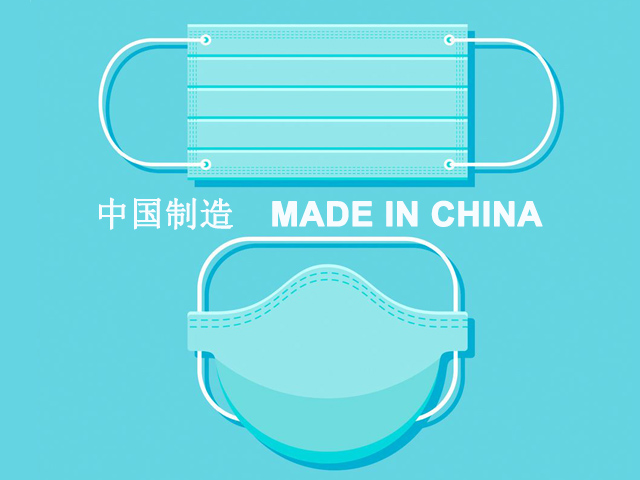
COVID-19, which is spreading globally, has lasted for half a year. This global Coronavirus pneumonia disease has claimed hundreds of thousands of lives. In many countries around the world, wearing masks has become a legally enforced measure to resist the spread of pneumonia. China is a large manufacturing country. From the masks produced by China for the protection of coronavirus, it has been supplied to countries all over the world.
China has a complete mask production chain and a complete industrial system.
The raw materials of masks are mainly non-woven fabrics made of high-melt polypropylene raw materials. Medical masks usually use a multi-layer structure, in which the innermost layer and the outermost layer are spunbond nonwoven fabrics, and the middle layer is a meltblown fabric.
Meltblown cloth is the core raw material for the filtering effect of masks. It is the “heart” of masks. In addition to blocking large dust particles, it can also absorb fine dust, bacteria and virus droplets through the electrostatic effect of the surface layer. As an important raw material for filtering masks, a general medical surgical mask should use one layer of meltblown cloth, and an N95 mask should at least use three layers of meltblown cloth. One ton of meltblown cloth can make 1 million medical surgical masks.
In fact, before the outbreak of coronavirus pneumonia, China’s meltblown cloth production was not high. Data information shows that in 2018, my country’s actual production of melt-blown non-woven fabrics was 53.523 million tons, accounting for 1.8% of the original production of spun-woven non-woven fabrics. The outbreak of the epidemic made the previously unpopular meltblown fabric a darling in the sales market. In response to the increasingly serious epidemic situation and the shortage of mask raw materials, central enterprises began to vigorously develop products, which eased tensions in the short term. According to the information from the Key Collaboration Group for Medical Materials of the State-owned Assets Supervision and Administration Commission of the State Council, as of 24:00 on March 6, the production volume of melt-blown fabrics of central enterprises reached about 26 tons on that day. With the new production line completed and put into production, the future production of melt-blown fabrics will increase significantly.
When making melt-blown cloth, it is necessary to melt the high-melt finger polypropylene through the high-speed high-pressure hot air flow, and then pull it out from the spinning micropores, and evenly lay it on the collection equipment under the correct guidance of the cyclone. Synthetic nets also need to be solved with the help of electrets, so that there is a certain charge on the melt-blown cloth strip, and reasonable use of electrostatic induction to absorb the droplets, so that the filtration efficiency of the melt-blown cloth will be higher.
The mask machine is another key link that affects the production capacity of protective masks, and is also a weak point in the protective mask industry chain. It uses multi-layer non-woven fabrics to make various protective masks with certain filtering performance through the processes of pressing, folding and forming, ultrasonic welding, scrap removal, and ear band nose bridge welding.
Current status of mask production in China
China is the world’s largest producer and exporter of protective masks, with exports accounting for about 50% of the world. According to statistics from the Ministry of Industry and Information Technology, the production capacity of protective masks in mainland China will reach 5 billion in 2019, and 54% of medical surgical masks available for virus protection . Therefore, China’s productivity is of great significance to the global anti-epidemic. A US Department of Health official pointed out that the raw materials for the production of related products need to be supplied from the Chinese market. In fact, manufacturers of protective masks in the United States have moved almost all of their factories to the Chinese market, and 90% of American protective masks have to be purchased from China.